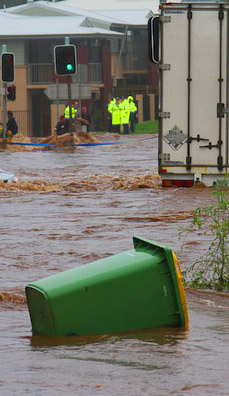Bacterial threat in flood recovery
 Authorities have issued special safety warnings for NSW communities as they deal with record flooding.
Authorities have issued special safety warnings for NSW communities as they deal with record flooding.
SafeWork NSW is urging people to be wary of flood waters and muddy soil that could be contaminated by an infectious zoonotic disease.
Leptospirosis is transmitted to humans from domestic and wild animals including mice and rats, livestock, pigs, pets and wildlife. It can cause flu-like symptoms such as fever and chills, headaches, muscle aches, cough, abdominal pain, nausea, vomiting, diarrhoea and conjunctivitis.
SafeWork NSW Director of Health and Safe Design, Jim Kelly, said outbreaks are common after floods and are usually associated with flood water contaminated with the urine or tissues of infected animals.
“People most at risk are those who have close contact with animals or who are exposed to water, mud, soil, or plants that have been contaminated,” Mr Kelly said.
“This could be anyone in a flood scenario as the contaminated water and mud are spread across properties and many people are involved in rescues, repairs and clean-up work.
“Obviously it is difficult to avoid contact with flood waters but if possible, wear protective clothing such as waterproof shoes or boots and gloves (even dishwashing gloves) and ensure broken skin is covered with a waterproof dressing.
“Anyone involved in clean-up efforts should also wear goggles and an apron, especially if working with animals and make sure to shower and wash cuts and grazes with soap.”
Mr Kelly said symptoms usually develop between five and 14 days following infection – although it can develop from two to 30 days and last from a few days to three weeks, or longer.
“Leptospirosis can be treated with antibiotics and a doctor may prescribe them before testing for infection. Testing can take some time and the disease can be severe,” Mr Kelly said.
“Make sure if you have any of the symptoms you mention this disease to your doctor.
“The risk will also be around sometime after the flood waters recede so don’t delay cleaning up rubbish and removing food sources that are close to facilities or accommodation.”







 Print
Print